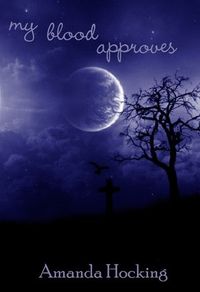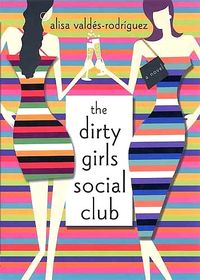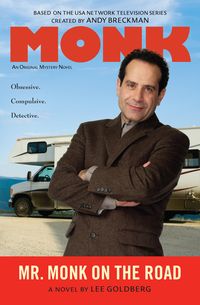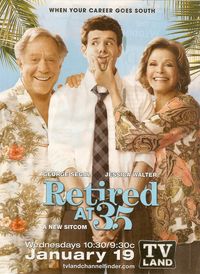Here's an Authors Guild report regarding how publishers are ripping off writers on ebook royalties…
E-Book Royalty Math: The Big Tilt
To mark the one-year anniversary of the Great Blackout, Amazon's weeklong shut down of e-commerce for nearly all of Macmillan's titles, we’re sending out a series of alerts this week and next on the state of e-books, authorship, and publishing. The first installment (“How Apple Saved Barnes & Noble. Probably.”) discussed the outcome, one year later, of that battle. Today, we look at the e-royalty debate, which has been simmering for a while, but is likely to soon heat up as the e-book market grows.
E-book royalty rates for major trade publishers have coalesced, for the moment, at 25% of the publisher’s receipts. As we’ve pointed out previously, this is contrary to longstanding tradition in trade book publishing, in which authors and publishers effectively split the net proceeds of book sales (that's how the industry arrived at the standard hardcover royalty rate of 15% of list price). Among the ills of this radical pay cut is the distorting effect it has on publishers’ incentives: publishers generally do significantly better on e-book sales than they do on hardcover sales. Authors, on the other hand, always do worse.
How much better for the publisher and how much worse for the author? Here are examples of author’s royalties compared to publisher’s gross profit (income per copy minus expenses per copy), calculated using industry-standard contract terms:
“The Help,” by Kathryn Stockett
Author’s Standard Royalty: $3.75 hardcover; $2.28 e-book. Author’s E-Loss = -39%
Publisher’s Margin: $4.75 hardcover; $6.32 e-book. Publisher’s E-Gain = +33%
“Hell’s Corner,” by David Baldacci
Author's Standard Royalty: $4.20 hardcover; $2.63 e-book. Author’s E-Loss = -37%
Publisher’s Margin: $5.80 hardcover; $7.37 e-book. Publisher’s E-Gain = +27%
“Unbroken,” by Laura Hillenbrand
Author’s Standard Royalty: $4.05 hardcover; $3.38 e-book. Author’s E-Loss = -17%
Publisher’s Margin: $5.45 hardcover; $9.62 e-book. Publisher’s E-Gain = +77%
So, everything else being equal, publishers will naturally have a strong bias toward e-book sales. It certainly does wonders for cash flow: not only does the publisher net more, but the reduced royalty means that every time an e-book purchase displaces a hardcover purchase, the odds that the author’s advance will earn out — and the publisher will have to cut a check for royalties — diminishes. In more ways than one, the author’s e-loss is the publisher’s e-gain.
Inertia, unfortunately, is embedded in the contractual landscape. If the publisher were to offer more equitable e-royalties in new contracts, it would ripple through much of the publisher’s catalog: most major trade publishers have thousands of contracts that require an automatic adjustment or renegotiation of e-book royalties if the publisher starts offering better terms. (Some publishers finesse this issue when they amend older contracts, many of which allow e-royalty rates to quickly escalate to 40% of the publisher’s receipts. Amending old contracts to grant the publisher digital rights doesn’t trigger the automatic adjustment, in the publisher's view.) Given these substantial collateral costs, publishers will continue to strongly resist changes to their e-book royalties for new books.
Resistance, in the long run, will be futile. As the e-book market continues to grow, competitive pressures will almost certainly force publishers to share e-book proceeds fairly. Authors with clout simply won’t put up with junior partner status in an increasingly important market. New publishers are already willing to share fairly. Once one of those publishers has the capital to pay even a handful of authors meaningful advances, or a major trade publisher decides to take the plunge, the tipping point will likely be at hand.
In the meantime, what’s to be done? We’ll address that in our next installment in this series, on Monday.
Our assumptions and calculations for the figures above follow.
——————————————————–
Doing the Numbers: Hardcover
To keep things as simple as possible, we assumed that for hardcovers: (1) the publisher sells at an average 50% discount to the wholesaler or retailer (2) the royalty rate is 15% of list price (as it is for most hardcover books, after 10,000 units are sold), (3) the average marginal cost to manufacture the book and get it to the store is $3, and (4) the return rate is 25% (a handy number — if one of four books produced is returned, then the $3 marginal cost of producing the book is spread over three other books, giving us a return cost of $1 per book). We also rounded up retail list price a few pennies to give us easy figures to work with.
“The Help,” by Kathryn Stockett has a hardcover retail list price of $25. The standard royalty (15% of list) would be $3.75. The publisher grosses $12.50 per book at a 50% discount. Subtract from that the author's royalty ($3.75), cost of production ($3), and cost of returns ($1), and the publisher nets $4.75 on the sale of a hardcover book.
“Hell’s Corner” by David Baldacci, has a retail list price is $28. The standard royalty is $4.20; the publisher's gross is $14. Subtract royalties ($4.20), production and return costs ($4), and the publisher nets $5.80.
“Unbroken,” by Laura Hillenbrand has a hardcover list price of $27. Standard royalties are $4.05. The publisher's gross is $13.50. Subtract royalties of $4.05 and production and return costs of $4, and the publisher nets $5.45.
Doing the Numbers: E-Book
E-book royalty rates are uniform among the major trade publishers, but pricing and discounting formulas fall into two camps: the reseller model favored by Amazon (Random House is the only large trade publisher using this model) and the agency model introduced by Apple a year ago. (See yesterday’s alert for more information on these models.)
Under the reseller model, the online bookseller pays 50% of the retail list price of the book to the publisher and sells the book at whatever price the bookseller chooses (for bestsellers, Amazon typically sells Random House e-books at a significant loss). Random House frequently prices the e-book at the same price as the hardcover until a paperback edition is available.
Under the agency model, the online bookseller pays 70% of the retail list price of the e-book to the publisher. The bookseller, acting as the publisher’s agent, sells the e-book at the price established by the publisher, but the publisher is constrained by agreement with Apple and others to set a price significantly below that for the hardcover version.
The unit costs to the publisher, under either model, are simply the author’s royalty and the encryption fee, for which we’ll use a generous 50 cents per unit.
Here’s the math:
“The Help” has an e-book list price of $13 and is sold under the agency model. Publisher grosses 70% of retail price, or $9.10. Author's royalty is 25% of publisher receipts, or $2.28. Publisher nets $6.32. ($9.10 minus $2.28 royalties and $0.50 encryption fee.)
“Hell’s Corner” is also sold under the agency model at a retail list price of $15 list price. Publisher grosses 70% of retail price, $10.50. Author's royalty is 25% of publisher receipts, or $2.63. Publisher nets $7.37. ($10.50 minus $2.63 royalties and $0.50 encryption fee.)
“Unbroken” is sold by Random House under the reseller model at a retail list price of $27. Publisher grosses $13.50 on the sale. Author
 This week marked an astonishing turning point in the publishing industry. USA Today published it's usual list of the top 150 bestselling books…but for the first time, they included self-published work in their calculations. Kindle Nation founder Stephen Windwalker calls it the "fall of the Paper Curtain." As if that wasn't amazing enough on its own, it wasn't just that a self-published author cracked the list…but that the same author managed to get seven titles on it. Self-published author Amanda Hocking's books placed 16, 24, 31, 81, 133, and 146 on the list, outselling authors like Stephen King and Nora Roberts. Here's what Windwalker predicts will be happening very soon:
This week marked an astonishing turning point in the publishing industry. USA Today published it's usual list of the top 150 bestselling books…but for the first time, they included self-published work in their calculations. Kindle Nation founder Stephen Windwalker calls it the "fall of the Paper Curtain." As if that wasn't amazing enough on its own, it wasn't just that a self-published author cracked the list…but that the same author managed to get seven titles on it. Self-published author Amanda Hocking's books placed 16, 24, 31, 81, 133, and 146 on the list, outselling authors like Stephen King and Nora Roberts. Here's what Windwalker predicts will be happening very soon:  to do the same, lest its bestseller list be rendered irrelevant.
to do the same, lest its bestseller list be rendered irrelevant. , Stieg Larsson
, Stieg Larsson , and Nora Roberts
, and Nora Roberts , will prove to have been ridiculously conservative. Regardless of when Amazon makes the announcement, Hocking will pass the million-copy mark in Kindle books sold by the first day of Spring this year, and she will be joined by another dozen indie authors before the arrival of Spring in 2012.
, will prove to have been ridiculously conservative. Regardless of when Amazon makes the announcement, Hocking will pass the million-copy mark in Kindle books sold by the first day of Spring this year, and she will be joined by another dozen indie authors before the arrival of Spring in 2012.





